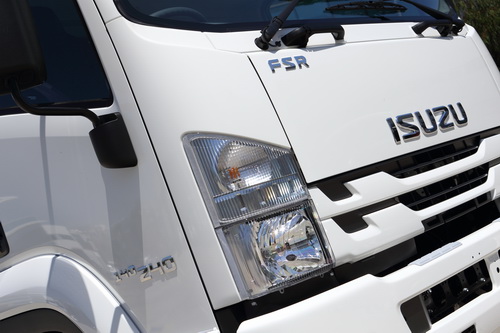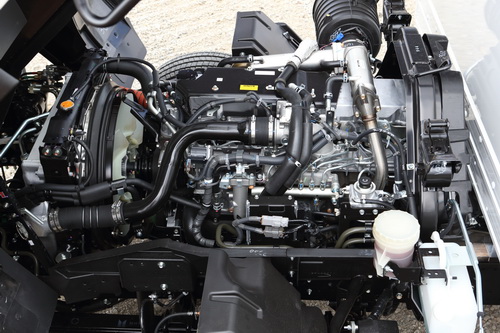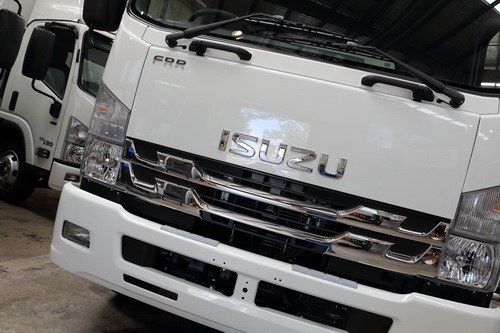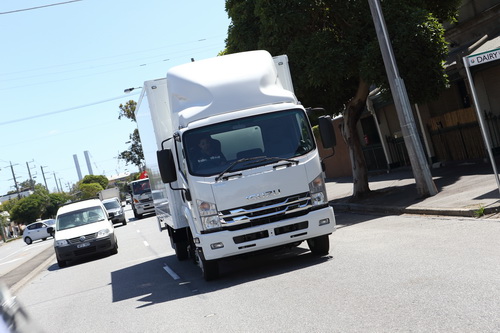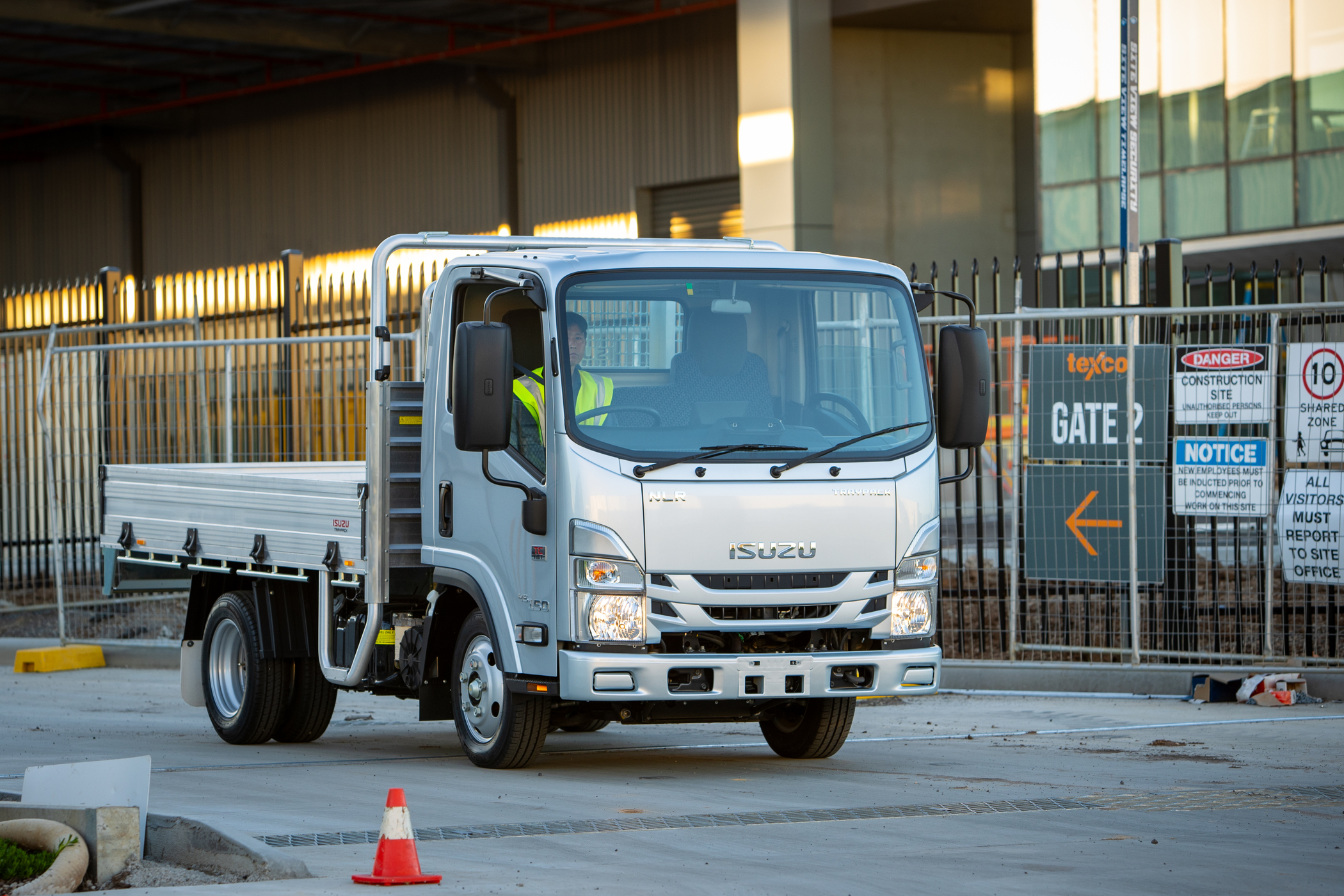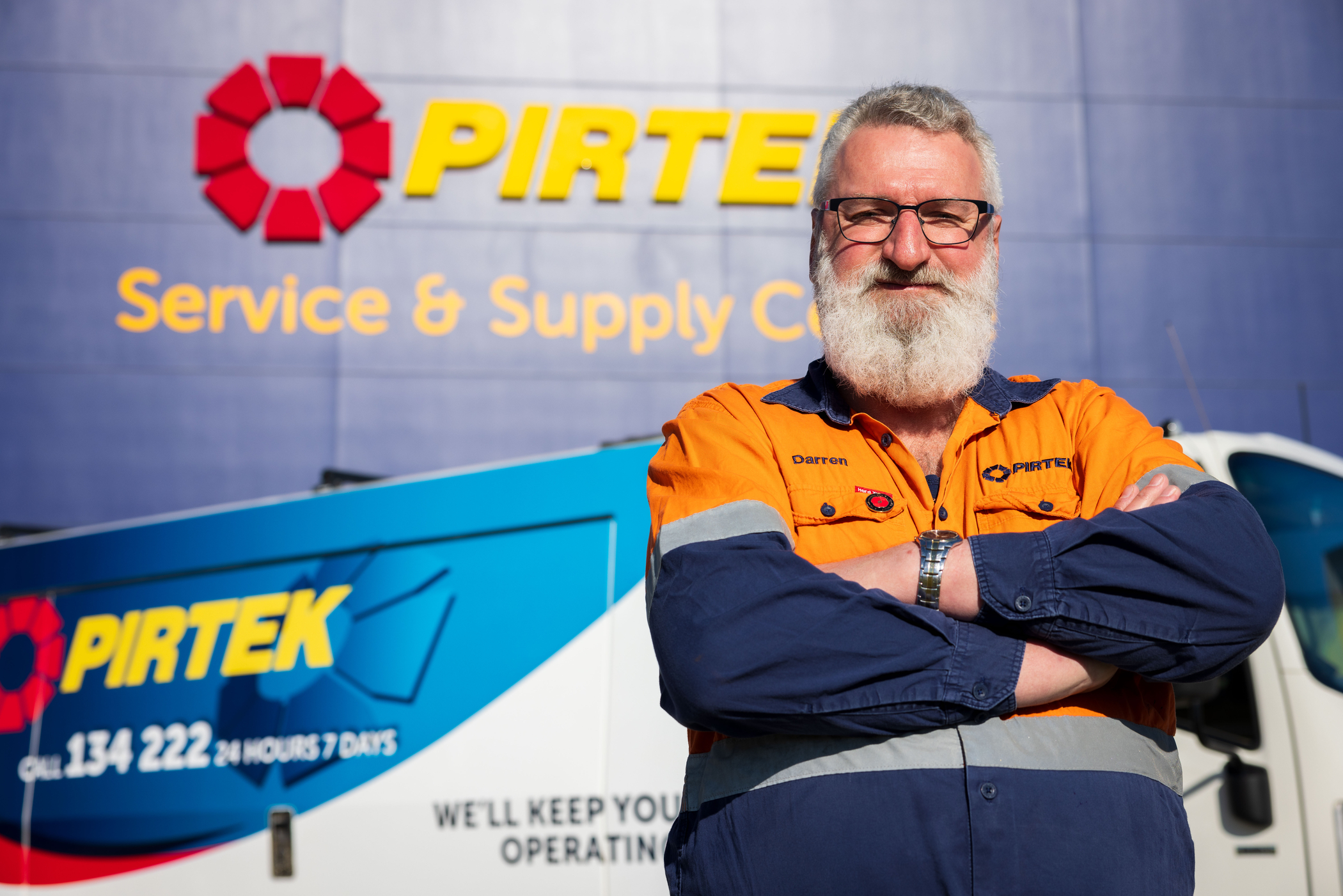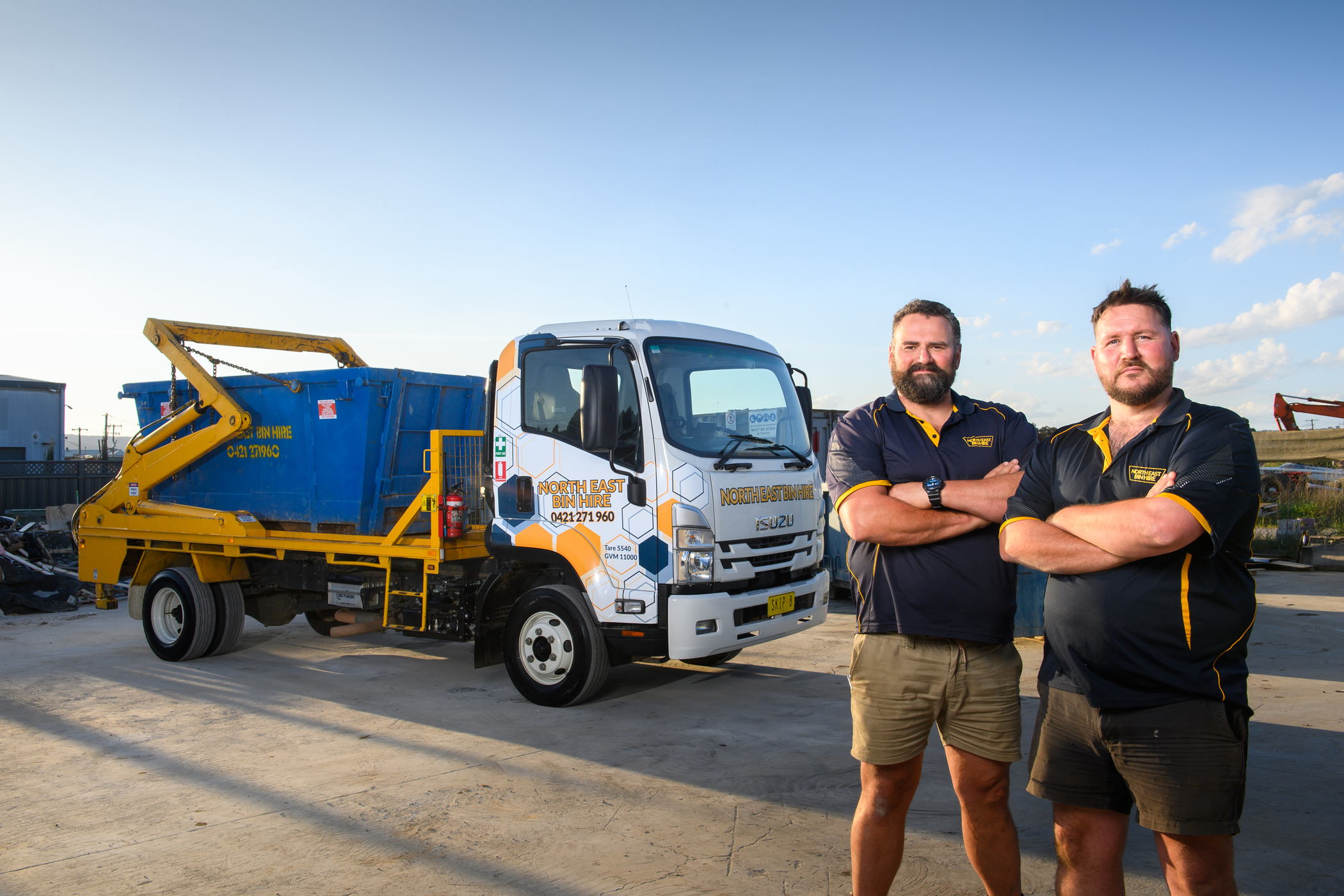[image_gallery][/image_gallery]
Isuzu Australia Limited (IAL) has redefined medium-duty trucking and added a new dimension into this hotly contested market segment with the launch of its newly released 2016 F Series range.
The clever new 2016 Isuzu F Series range counts as the latest and greatest stride in what has been an ever-evolving product journey dating back to the late seventies.
In its most wide-ranging upgrade in almost a decade, the new offering brings together Isuzu’s unsurpassed international experience both on and off the highway, and nearly three decades of local market domination, unmatched anywhere in the world.
What’s new?
What’s immediately apparent is a brand new look for the F Series including new grille design, badging and nomenclature, as well as updated seat trim and steering wheel design.
Though it’s under the skin where the real revolution gets underway…
The new truck range features a fresh approach, with the tried and true F Series now available with two very different driveline technologies for 4x2 and 4x4 models.
The jewel in the crown is Isuzu’s small displacement, high torque new 4HK1 turbocharged and intercooled diesel engine, considered the cleanest medium-duty Japanese diesel engine available in Australia today.
Its complement is the new six-cylinder Isuzu 6HK1 engine with Diesel Oxidation Catalyst (DOC) for low maintenance and unparalleled dependability.
And Isuzu’s new torque converter equipped automated manual transmission (TC-AMT) – among an array of other range-wide improvements – rounds-out a comprehensive and innovative road transport solution.
Customer first
“The new Isuzu F Series range represents change on a level we haven’t seen in the medium-duty market for quite some time,” said Phil Taylor, IAL Director and Chief Operating Officer.
“Be it waste and refuse, cold-chain logistics, dry freight, pick-up and delivery, emergency services or something out of the ordinary – the new Isuzu F Series range covers even more applications than the previous line-up.
“While our F Series offering is constantly evolving to meet the needs of Australian businesses, our approach to product development hasn’t seen a great deal of change over the years.
“We will always put the needs and requirements of our customers first.
“It’s a straightforward, ‘fluff-free’ approach that has served us well for 27 consecutive years as the market leader, and we aim to keep it that way.
“In this new F Series range, customers have access to a wider range of quality capital equipment and industry-leading aftersales innovation at a very competitive price.”
Driveline choice
There are two engine options available across the 4x2 and 4x4 range, and four different power outputs.
Operators can now choose from two power variants radiating from the low displacement, high torque new 4HK1 four-cylinder turbocharged and intercooled diesel engine.
Alternatively, there’s a new no-fuss, six-cylinder Isuzu 6HK1 engine with maintenance-free Diesel Oxidation Catalyst (DOC), with the same emissions technology as seen in the highly admired and well-known Isuzu 6UZ1 350 PS engine.
Isuzu’s new 4HK1 engine
Isuzu first introduced a four cylinder power-plant to the F Series range back in 2007, with the FRR 500 models.
In 2016, the four-cylinder option has been extended up the GVM range.
The new 4HK1 is a completely redesigned engine, with only the bore and stroke remaining the same as its predecessor, and with its low displacement and impressive power and torque rating, there is nothing quite like this engine on the market right now.
When specifying the new 4HK1, customers can take advantage of a 5.2 litre, four-cylinder, two-stage turbocharged and intercooled engine available in two power ratings:
- A 154 kW (210 PS) variant, producing 726 Nm of torque.
- A 177 kW (240 PS) variant, generating 765 Nm of torque.
They represent state-of- art diesel technology which stretches across a swathe of the F Series range, including 11 brand new models.
The 240 PS models include the FRR at 11 tonnes GVM and FSR at 12 tonnes and 14 tonnes GVM respectively. Meanwhile, the 210 PS variants include the Isuzu FRR and FRD 4x2 models and the FSS 4x4 with GVMs spanning 10.7 tonnes to 11 tonnes.
Clever turbo
As far as improved performance is concerned, a key update to the new 4HK1 engine is the introduction of a two-stage turbocharger.
Both the low-pressure and high-pressure elements of the turbo operate throughout the engine rev range, providing smooth and continuous power from take-off.
The physical size of the turbo has also been reduced, giving a quicker response during low engine RPM and faster availability of engine torque.
An environmental victory is delivered via the high pressure-charging of the turbo which increases the effectiveness of the exhaust gas recirculation (EGR) system – resulting in lower nitrogen oxides (NOx) output.
Other class-leading refinements to the new 4HK1 include the following:
- Changed intake cam design (increased low RPM torque).
- A change in the piston shape (reduced PM, improved fuel economy).
- Increased injection pressure (reduced PM, improved fuel economy).
- Optimised injectors (reduced PM, improved fuel economy).
- An improved EGR valve control (reduced PM and NOx).
- Larger intercooler to reduce the air intake temperature and combustion temperatures (reduced NOx).
- Revised engine block to suit the higher cylinder pressures.
Idle no more
Further improving fuel economy for models fitted with the new 4HK1 engine is the addition of Isuzu’s idle-stop technology, known as the Idle Stop System (ISS).
This system rests the engine when the vehicle is stationary (for example, at traffic lights or in heavy traffic conditions), reducing emissions and, ultimately, fuel consumption.
ISS is standard on 4x2 models featuring the new 4HK1 engine, except for power take-off (PTO) variants, and plays a significant role in both the 210 and 240 PS versions in reducing fuel consumption.
Isuzu domestic market data shows a seven per cent overall fuel saving in the new 4HK1, and in heavy traffic, ISS can provide fuel savings in the neighbourhood of five to ten per cent on its own.
With recent Isuzu Australia research showing existing FRR and FSR models idling at an average of 50 per cent of time in operation, useful cost savings can be expected from ISS.
Reduced fuel consumption was a key consideration in the development of this engine and IAL is confident these savings will be well regarded by customers.
Emissions control
Looking at the emissions control system, the new 4HK1 complies with Japan’s Post New Long Term (PNLT) emissions standard, which is similar to Euro VI. Both PNLT and Euro VI are expected to be acceptable alternatives when ADR 80/04 (the next emissions standard for trucks) is finalised.
To this end, an external injector for Isuzu’s diesel particulate diffuser (DPD) system has been added to the new 4HK1. The diffuser works to remove particulate matter (PM) from the exhaust gas emitted by the engine.
As opposed to the existing system, the new external injector eliminates oil dilution by commencing the regeneration process outside the engine block.
TC-AMT
From now on the high-tech, clean new 4HK1 can be mated to the latest generation of Isuzu automated manual transmission.
This third generation AMT sees the original fluid coupling upsized and upgraded to a full torque converter.
A torque converter significantly increases start-ability and driveability, replicating the take-off characteristics of a full automatic.
During times of high slippage (taking off from the lights for example), the converter works by redirecting fluid and producing an increase in output torque.
With a torque multiplication factor of 1.45:1, the Isuzu TC-AMT helps to launch the vehicle from rest.
Isuzu F Series models that benefit from the new torque converter AMT are spread across the 10.7-tonne to 14-tonne GVM variants.
The FRR and FRD 10.7 tonne models both receive the 210 PS new 4HK1 engine with improved DPD and the new torque converter AMT where available.
The 11-tonne, 12-tonne and 14-tonne 4x2 GVM trucks will benefit from the high torque 240 PS engine variant with Isuzu’s optional torque converter AMT.
The Isuzu 6HK1 DOC engine
The other engine technology sharing centre stage is Isuzu’s new six-cylinder 6HK1 engine with Diesel Oxidation Catalyst (DOC).
This is the same engine technology used in the very popular FX and FY models with the 6UZ1 350 PS engine, in this case producing 191 kW (260 PS) @ 2,400 RPM and 761 Nm of torque from 1450 to 2400 RPM.
The 6HK1 with DOC is the only medium-duty engine on the Australian market with neither a diesel particulate filter nor SCR, and the technology is well-suited to vocational applications requiring high idle time, high PTO use or frequent stop-start duties.
Emissions control
By optimising every aspect of combustion in the engine, the Isuzu Japan engineers have produced an engine that generates fewer emissions at the manifold and, therefore, requiring a simpler clean-up operation in the exhaust system.
To this end many changes have been made including a modified combustion chamber and compression ratio to improve efficiency and reduce PM emissions.
Fuel injection pressure has been increased by over 10 per cent to 200 MPa, resulting in even greater fuel atomisation and therefore combustion efficiency.
As well as higher injection pressure, the number of injection ports has been increased and the injector angle optimised, creating the best possible fuel burn conditions and combustion efficiency, while the EGR valve control has been optimised, resulting in reduced PM and NOx emissions.
Greater flexibility
The new 6HK1 with DOC powers FRR, FRD, FSR, FSD, FTR and FTS models with the Isuzu 6-speed manual transmission, or the Allison LCT2500 six-speed automatic transmission.
The new 6HK1 DOC engine is also available in a new model to the line-up, the FVR and FVD with ZF manual transmission or Allison MD 3000 six-speed automatic.
The Isuzu F Series range: More choice
The 2016 F Series range represents more choice for medium-duty truck customers, with additional models, wheelbases and model variants included in the line-up to tailor the already eminently capable range to a wider pool of customers and applications.
At 10.7 tonnes 4x2 are the FRR (including Tipper) and FRD models equipped with the new 4HK1 210 PS engine, with either the TC-AMT or Isuzu manual transmission.
Staying with the four-cylinder engine at 11 tonne GVM is the FRR with the 240 PS new 4HK1, again with either the new TC-AMT or Isuzu manual transmission.
In the six-cylinder 11-tonne variants are the FRR and FRD, sporting the 260 PS 6HK1, and including the crew-cab model. These variants can be ordered either with Isuzu manual or Allison LCT2500 6 speed automatic transmissions.
At 12 tonnes GVM (with an optional 14-tonne rating) there is the FSR with the 240 PS new 4HK1 engine and choice of manual or TC-AMT transmission.
For FSR and FSD at 14-tonne GVM (with the option of being de-rated to 12 tonnes GVM) is the six-cylinder 6HK1 DOC, with either a manual or Allison automatic transmission.
To round off the FSR lineage, there’s the 14-tonne GVM rated dual-control model available for a range of vocational applications and sporting the new 6HK1 DOC engine.
Moving up in weight to the 15-tonne GVM bracket are two FTR offerings including crew cab – equipped again with the no-nonsense 260 PS DOC engine.
Continuing through the range, the brand new entry level full size 4x2 FVR and FVD models, both at 16.5 tonnes GVM, are powered by the 260 PS 6HK1 DOC, while the remainder of the FV range carries over with the highly effective 300 PS variant of the Isuzu 6HK1 engine.
Regardless of the engine technology applied, each model embodies a substantial leap in overall development from what was previously available.
Other changes…
- Manual transmission new 4HK1 models benefit from the addition of the Start Assist function, to enable easier, faster clutch engagement.
- Revised multi-information display, with a larger screen comes standard across the range.
- Low-coolant sensor for all models. This seemingly minor addition represents huge risk mitigation with advance warning of a situation that could result in a catastrophic engine failure.
- Fuel cooler has been introduced to models with the new 4HK1 and 6HK1 DOC engines.
- Upgraded Anti-lock Braking System (ABS) module and software with ABS 8 is now included on FTR, FV, FSS and FTS models.
- Rear seat in crew-cab models has been improved with additional padding in the seat base and realignment of the back rest for greater support.
- Hill Start Aid (HSA) has been introduced in all manual transmission FSS and FTS 4x4 models.
- Additional wheelbase option for FSR models at 4,360 mm.
- A 90 amp alternator has been added to all new F Series models resulting in a 50 per cent output increase for some models.
- Passenger side ISRI 6860 air suspension seat in the FTS single and crew cab as well as the FTR crew cab model.
- Satellite navigation as standard on all models (except 4x4).
- Elimination of oil changes at the first free service and an extension of oil change intervals from 15,000 km to 20,000 km for those models with either new 4HK1 or 6HKI DOC. This means the entire F Series range now has 20,000 km service intervals.
- Isuzu remains the only Japanese brand to use the highly regarded Meritor axle and brake assemblies on FVR and FVD 4x2 models, including the new 260 PS DOC models, the FVL 6x2 model and all FVZ or FVY 6x4 models.
- FV models with Meritor axles have factory fitted Stemco Sentinel oil-filled hubs with Discover hub seals.
Boxes ticked
“All businesses with a stake in the future are intent on performing at peak efficiency – from every operational aspect. Seizing on that efficiency is at the very heart of this latest incarnation of the Isuzu F Series,” said IAL’s National Sales Manager, Andrew Harbison.
“And when it comes to efficiencies, there’s no denying the constant demand to achieve more from less across the automotive world.
“Some of these trends represent a challenge to the status quo, but as we know evolution is also a constant and we must embrace and adapt to change,” he said.
“The Isuzu F Series range is a cleverly configured solution with a spec’d drivetrain that can deliver more than enough power and capacity to work hard while delivering low cost operation.”
ends
For further information, please contact: For Isuzu Truck Releases and Photos:
Jeff Birdseye Arkajon Communications
Marketing Manager Phone: 03 9867 5611
Isuzu Australia Limited Email: isuzu@arkajon.com.au
Phone: 03 9644 6666


